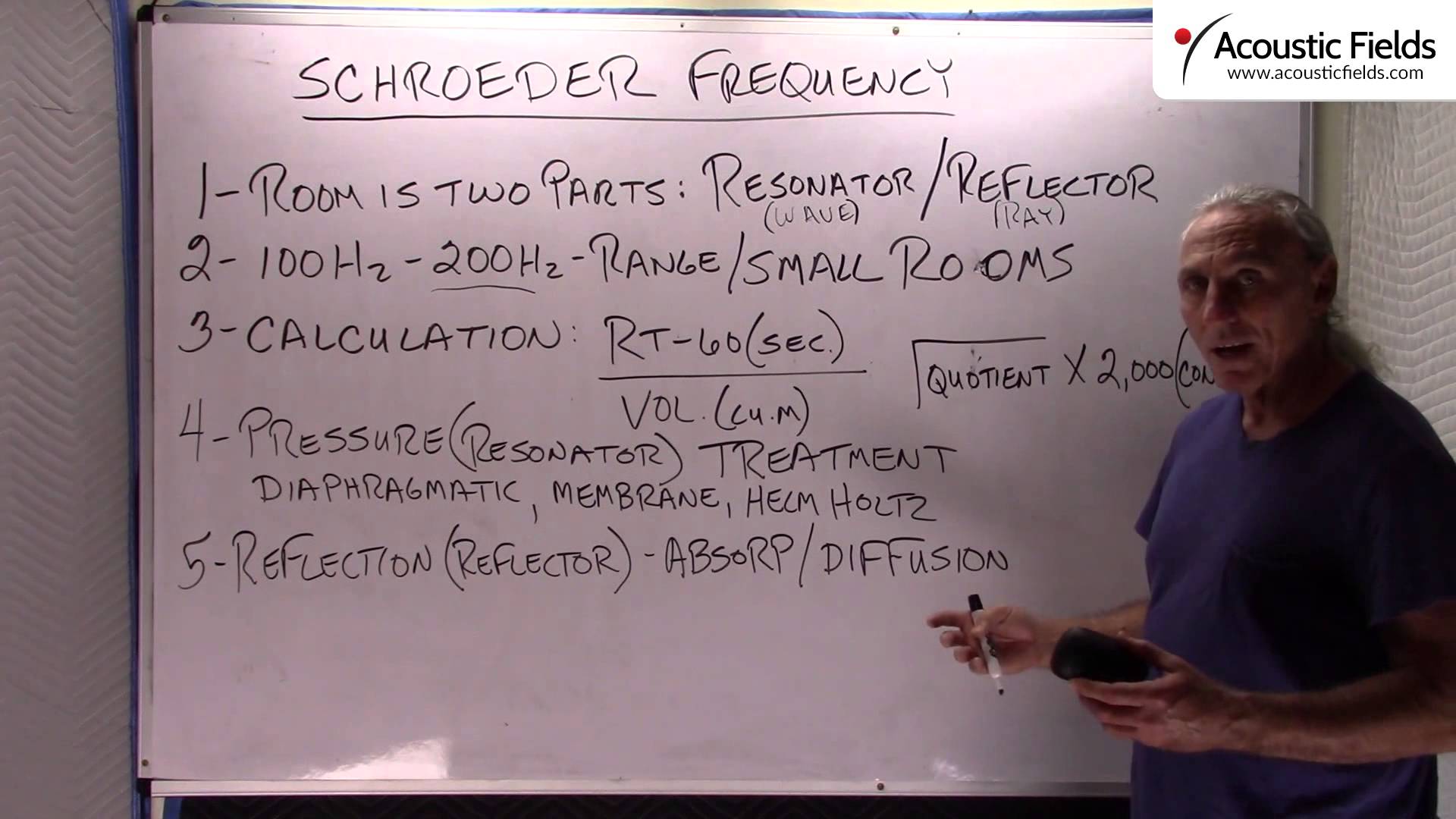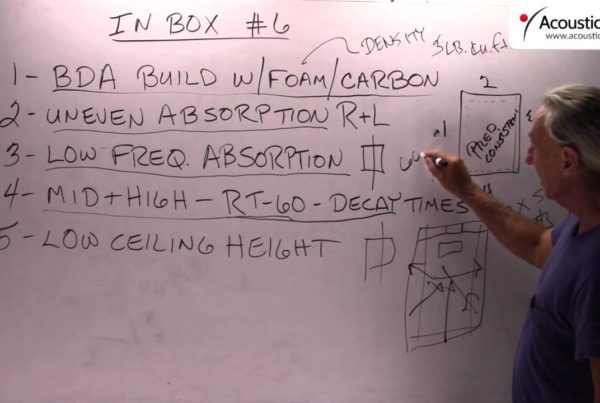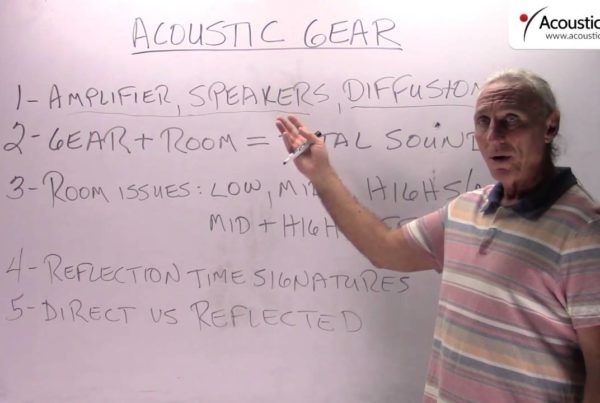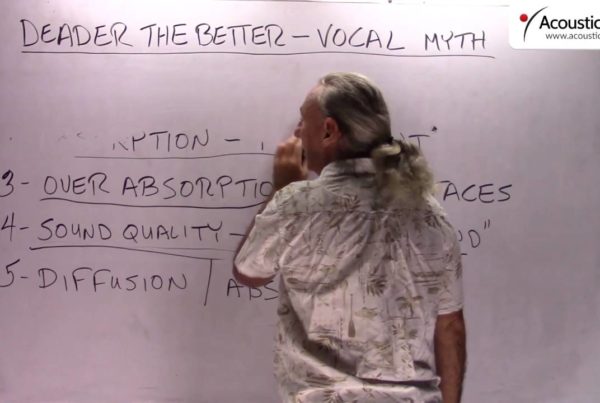The Schroeder Frequency is a term to illustrate the different speed how waves impact the room versus rays. We have done quite a few videos on waves and rays and we have a really good video, that ocean video on waves that you should look at to figure that. But basically Schroeder was a German engineer. He is the same gentleman that brought quadratic diffusion. He was a very good acoustician. He said that the room is basically divided in two parts: the resonator and reflector. The resonator deals with wave energy or low frequency and the reflector deals with the ray energy which is the middle and higher frequency. Schroeder tells us that the room is really two parts, and a lot of people don’t get that, they think that it is just one part. But it really has two parts, and the energies, the problems and the issues that each part has are completely different. You use similar technologies, but completely different approaches. In terms of square footage, positioning, all kinds of variables.
So in today’s small rooms it is typically between 100 and 200 cycle range), probably closer to the 200 cycle. What does that mean? Well that means in our room anything less than 200 Hertz has to have one kind of treatment and anything greater than 200 cycles has to have another type of treatment. Now where is this energy going to be problematic? This depends on the size and volume, that’s why you always have to fill out our „room form” so I can compare it to our database which is all these rooms that have measured data for pressure and reflections. They have been pressure mapped and reflection mapped, so we can tell where the issues are right away and save you a lot of trouble in measuring and time. So the bottom line here is: Where in the room are we going to have our high pressure and where we are going to have our reflection issues? How do we calculate it?
It is the reverberation time in seconds divided by the volume of the room in meters that will keep those two straight, the quotient then is square rooted and times 2000, which is a constant. I just want you to get an idea. Through reverberation time and volume, remember I am always talking about volume. And today’s small rooms don’t have any volume, so that is always a problem, it has an impact on everything. Here is a good situation and good example to show that even reverberation and lower frequency pressure are related. So you have to look at what is going on here, there is a lot of variables and they all have to be married together and get along, and how often does that happen? Never with humans… So, anyway, pressure, treatment. What are we going to use for the resonator part or the wave part or the low frequency part of our room? We have three. Diaphragmatic, membrane, Helmholtz. Diaphragmatic is the most powerful, that is why we use. We hot rodded a lot with our carbon technology. Membrane is the cousin of diaphragmatic, can get as low as diaphragmatic but not at the rates and not at the level that you really need in today’s small rooms. So it is a good product used correctly. And then Helmholtz, it’s very frequency specific, narrow band in it’s absorption. Diaphragmatic very broad band, so you can get more for your space requirement. So always keep that in mind.
For reflections or the reflector or the ray part of the room, what are we going to use? We have two: absorption and diffusion. Which one? Depends on usage. Control room, mix room: different usages. You can fine tune it that severely. A vocal room is way different than a drum room, once again, it depends on usage. This will give you an overview about the Schroeder Frequency. In your mind you have to now start to think of your room as having two parts: A resonator which produces unwanted pressure because of dimensions, the energy won’t fit; and the reflector which is all the reflections of the walls and surface areas. And those all have to be married and work together. If you have too much resonation and not enough reflection you will have low frequency boom. If you have too much reflection and not enough resonator balance you will have that tinniness that we call off room surfaces and source material, too. So I hope that helps with Schroeder Frequency!
—
This is an unedited transcript from our video series from Acoustic Fields. There will be some errors in grammar and sentence structure that occur during this translation process.
For complete understanding and comprehension, please view the video which is included in this text. For any additional information regarding this topic or others relating to room acoustics, please contact us directly at:
P: 520 – 392 – 9486








Can I get opportunity to work with you.,
A, Send resume to info@acousticfields.com